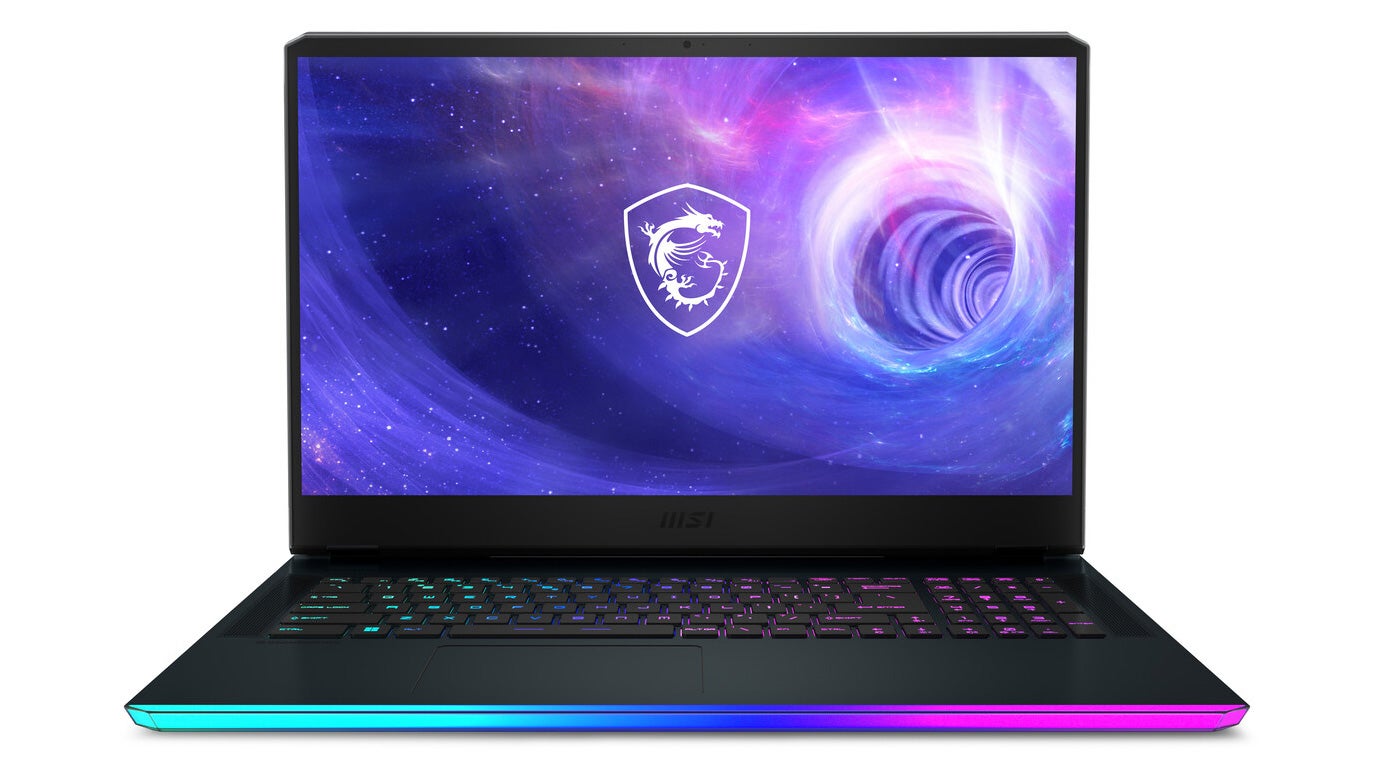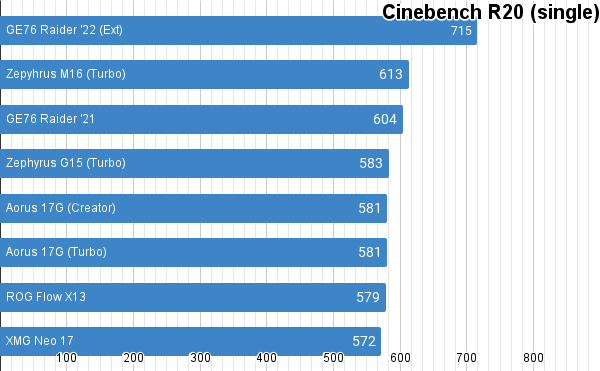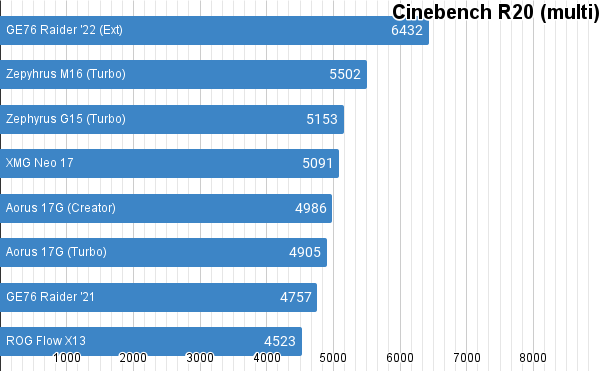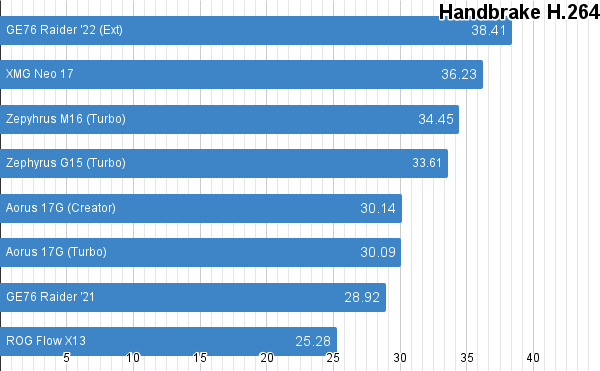First, let’s briefly introduce you to the star of today’s show - the GE76 Raider. It’s a tremendously powerful machine, especially in the top spec configuration we’re testing today. As well as the Core i9 12900HK and RTX 3080 Ti 175W Laptop GPU, there’s 32GB of dual-channel DDR5-4800 RAM, a 17.3-inch 360Hz display and two 1TB PCIe 4.0 SSDs. All of this hardware is housed inside a generously-sized chassis, allowing the components within to stay relatively cool without resorting to jet-grade fan noise. Perhaps unsurprisingly, this chonky machine retails for $4199 when paired with an even fancier 4K 120Hz screen - we presume that the 360Hz option we’re testing isn’t much cheaper. Here are the full specs of our review unit:
Intel Core i9 12900HK 14-core CPU (6P+8E) Nvidia GeForce RTX 3080 Ti Laptop (175W) graphics card 2x16GB DDR5-4800 RAM 2x 1TB Samsung MZVL22 PCIe 4.0 NVMe SSD 17.3-inch 1080p 360Hz IPS display 99.99Wh battery
The GE76 Raider ‘22 performs extremely well right off the bat, even in its balanced mode, with a single-core Cinebench R20 score of 703 and a multi-core score of 6370. Those are the fastest we’ve ever recorded for a laptop processor, and is in the same ballpark as the desktop Core i5 12600K. With the MSI ‘Extreme Mode’ turned on, this is lifted slightly to 715 and 6432.
In our video transcode test, we take a piece of Patreon footage and transcode it into H.264 and H.265 (HEVC) formats using Handbrake with a Production Standard CRF 18 setting. Unlike our desktop machines, the GE76 laptops also offer the ability to use Intel’s Quick Sync Video (QSV) tech, which utilises the integrated graphics to accelerate the workload. Our stock H.264 and HEVC results are impressive, with the GE76 ‘22 managing 38.41fps H.264 and 16.38fps H.265 in its Extreme Mode (complete with moderate fan noise). Those are chart-topping results, although the margin is only three percent over the Zephyrus M16 with its Core i9 11900H. With QSV enabled, those frame-rates go up significantly - all the way to 97.53fps for H.264 and 31.56fps for H.265. That’s with Extreme mode enabled; with Balanced mode we get a more reasonable (but still impressive) 77.24fps and 51.69fps, respectively.
Next, we’ll get to the star of the show: real gaming performance. We’ve tested the top-spec 2022 GE76 Raider against its 2021 counterpart, so we can get a sense of how much extra performance is unlocked when shifting from the Core i9 11980HK to the 12900HK, as well as the leap from the RTX 3080 to the RTX 3080 Ti. We’ve also got results from a selection of other high-end 2021 laptops from Asus and Gigabyte to provide a little bit of extra context. Here’s how each machine stacks up, for future reference…
MSI GE76 Raider 2022: Core i9 12900HK + RTX 3080 Ti MSI GE76 Raider 2021: Core i9 11980HK + RTX 3080 Aorus 17G: Core i7 11800H + RTX 3070 Zephyrus G15: Ryzen 9 5900HS + RTX 3080 Zephyrus M16: Core i9 11900H + RTX 3070 Flow X13: Core i9 5980HS + GTX 1650
The GE76 Raider has also been a fun laptop to test over the past couple of days. The light bar across the front looks great, the machine feels reasonably well built and the keyboard is one of the better ones I’ve used recently. The 360Hz screen doesn’t quite get to stretch its legs in AAA games, but I’m looking forward to testing it out in Counter-Strike or Apex Legends if I have time later on. The port selection is also super impressive, with three display ports, power and ethernet around the rear, three full-size USB ports on the sides and more besides. The Raider is a fairly loud laptop when set to its extreme mode, but the balanced mode is much quieter and still performs beyond the capabilities of other machines we’ve tested at their highest setting which is nice to see. If you’re in the market for a high-end machine, then these options could well be worth the steep price of entry, and we look forward to seeing more comprehensive reviews from other outlets in the coming weeks and months. It’ll be particularly fascinating to see how lower-tier 12th-gen CPUs (and the RTX 3070 Ti) fare in more affordable gaming laptops, especially within that $1000 to $2000 zone where most gaming laptop purchases take place.





